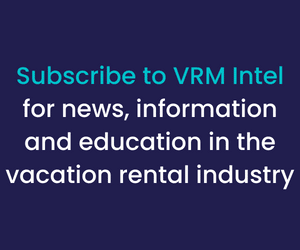
We’ll cut your commission rate in half!
$5,000 sign-up bonus!
$10,000 interior design credit!
20% payout to realtors for referrals!
It is contract renewal time for many vacation rental managers, and the flyers are flying. With the end of the summer season comes the fall frenzy to acquire new properties, and the competition is heating up. New players and new business models are sprouting in many destinations, all with the singular focus of increasing inventory.
What is the best strategy for adding inventory to a vacation rental program? Taking a cue from business development programs around the globe, there are five identifiable steps to creating a solid homeowner acquisition plan.
-
Analyze
-
Target
-
Create Messaging
-
Identify Marketing Channels
-
Evaluate
1. Analyze
With changing market conditions, professional property management companies are finding it beneficial to first analyze the performance of existing inventory before implementing a business development plan.
Finding the sweet spot
Over the last few years, the vacation rental industry has seen significant changes in marketing costs, guest behavior, competitive pricing and rent-by-owner models. Inventory which once was profitable may now be a liability.
For many property managers, the counter-intuitive solution they discover through comprehensive analysis is to decrease inventory rather than add properties.
“Sometimes adding properties provides diminishing returns,” said Trisha Howarth, Hospitality Sales and Marketing Director at Bald Head Island Limited in North Carolina. “We performed a profitability analysis on our inventory and were able to put in place a financial model to determine which homes were contributing to our bottom line and which were not.”
Bald Head Island Limited initially cut their inventory from 175 properties to 125, and achieved a notable improvement to the bottom line. Consequently, the company fine-tuned their algorithm and continued to weed out under-performing homes.
“By reducing our inventory, we have been able to dramatically improve our profitability,” said Howarth.
2. Target
After performing a thorough analysis of inventory performance, vacation rental managers are able to articulate the types of properties which are profitable for their company and their unique selling proposition.
“Now, we know exactly what we are looking for in a home and what projections work for our model, so we are not tempted to take on just anything,” said Howarth. “Our team is in agreement, and we are now able to target by home. We actually personally go look at the property before targeting it for acquisition.”
Jason Sprenkle, CEO at 360 Blue in Destin, Florida, agreed. “We primarily focus on individual properties,” said Sprenkle. “We utilize the real estate database in our market and keep an eye on specific real estate transactions and new construction.”
For new companies, those with out-of-the box models, and companies with a diverse audience, targeting a wide range of properties has been a more advantageous strategy.
“In our market, we don’t do a lot of targeting based on property type,” said Ryan Goodman, CMO at Kokopelli Property Management in Santa Fe, New Mexico. “We all know that a five bedroom house yields more revenue than a two bedroom condo, but not if the owner of the five bedroom house is calling every day and upsetting the system. We weed out in the sales cycle, not in the marketing campaign.”
Each vacation rental management company has an individual optimal target market. Identifying and characterizing that market leads to more focus, less time and less expense in the acquisition process.
3. Create Messaging
Successful marketing begins with a clear message, and homeowner marketing is no different. After analyzing inventory performance and isolating a target market, vacation rental managers are able to craft messaging based on vital components of their unique selling proposition, such as profitability, occupancy, service, relationships, likeability, fee-structure and commission rates.
“What separates us from other companies in our area is that our bookings are so much stronger and occupancy is higher,” said Steve Milo, Founder and Managing Director at Vacation Rental Pros Property Management based in Ponte Vedra Beach, Florida, who creates messaging communicating their success.
For other companies, the service and relationship is the primary focus in communications.
“For us it is all about the relationship,” said Sprenkle. “In our market, the owner has to like you and trust you before they hand over the keys to their multi-million dollar home. We focus heavily on personal touch, ethics, integrity and trust. When you are new in the industry, you better have the best deal. After you have your feet underneath you, you should be providing the best service.”
“The question homeowners are asking is what makes you different,” said Jodi Refosco, owner of Taylor-Made Deep Creek Vacations in Maryland. “Whether it is higher occupancy, better service or more personalized relationships -or a combination of factors -messaging should communicate what makes your company unique.”
4. Identify Marketing Channels
Property managers are utilizing multiple channels to reach prospective owners, including direct mail, email, pay per click, realtor referral programs, social media, in-person marketing, and events. Some referral programs are offering realtors up to 25 percent of the first year’s commission on signed contracts.
“We sent out a four piece direct mail campaign to 600 contacts in Angel Fire, NM,” said Kokpelli’s Ryan Goodman. “It cost us $2,000, and we got 15 contracts from it. At the end of 2013, when all rental proceeds from those contracts were calculated, we had a 3,000 percent return on that investment.”
From direct mail to email, from glossy brochures to personalized letters, marketing to homeowners has gotten to be big business in competitive locations.
“We saw one of our competitor’s brochures which looked like it could have been from GE,” said Sprenkle. “We skip all of the glossy stuff. For us, it is not about coming in with a classier presentation. It’s about being down to earth and straight-forward, building trust, and communicating a clear set of expectations that owners believe we can deliver.”
Elliott Beach Rentals in North Myrtle Beach, South Carolina decided to invest in brick and mortar locations in their target areas. “Guests and owners have an increased comfort level and familiarity when they see and feel a physical presence,” said CEO Rick Elliott. “We staff these offices with Owner Service Professionals, who serve as the point of contact for homeowners in the area.”
Owner service as a marketing tactic
For established vacation rental managers, owner referrals are the number one source of owner acquisition, and 360 Blue decided to capitalize on that feature as a key focus in their business development strategy.
“Nickel and diming owners over a maintenance fee while you are paying a realtor thousands of dollars in a referral program doesn’t make sense in our business,” said Sprenkle. “We have found that investing in making homeowners happy is a better use of marketing dollars than paying off referrers.”
Bald Head’s Howarth agreed. “Our CEO Chad Paul tells us, ‘Do your job, do it well, and make the most money we can for our owners,’” said Howarth. “It has paid off for us. In fact, many owners who left have come back to the program.”
5. Evaluate
“However beautiful the strategy, you should occasionally look at the results,” Winston Churchill
Marketing should not be set in motion and left alone, but constantly reviewed, evaluated and adjusted to meet company objectives. While it is beneficial to calculate an overall measurement, a more specific breakdown by each marketing channel provides critical insight into which campaigns worked and which fell short.
CRM tools are especially useful in measuring tactical effectiveness. Both 360 Blue and Vacation Rental Pros utilize CRM tools to manage owner marketing efforts, allowing their team to track activity and communications with prospective homeowners.
Evaluating the performance of the owner acquisition plan helps to measure the short term success and provide intelligence for a long term growth strategy.
While each owner marketing plan will be tailored to the individual objectives of the vacation rental management company, through reflective analysis, laser-focused targeting, compelling messaging, ROI-based marketing channels and careful evaluation, property managers are able to execute a specialized owner acquisition plan which leads to lasting results.
“We’ve learned that our marketing to new homeowners should reflect who we are as a company,” said Refosco. “Being authentic and communicating what makes us unique is the only sustainable way to create an inventory growth plan that yields long term results.”
By Amy Hinote













RSS